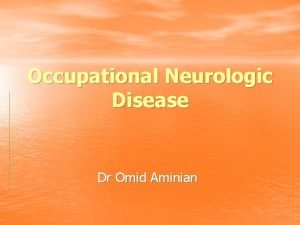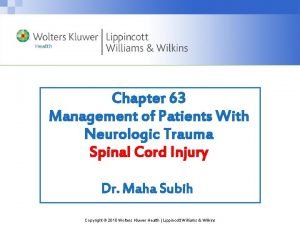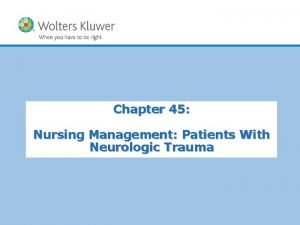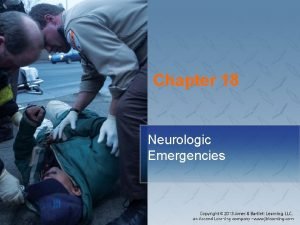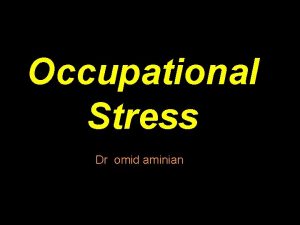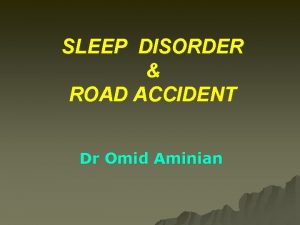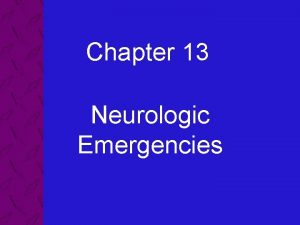Occupational Neurologic Disease Dr Omid Aminian Occupational Neurologic










- Slides: 10

Occupational Neurologic Disease Dr Omid Aminian

Occupational Neurologic Disease • Mechanical injuries Occupational entrapment neuropathies • Chemical neuropathies CNS (most common syndrome is encephalopathy) PNS (The most non specific syndrome is a distal symmetrical sensorimotor polyneuropathy

Occupational Entrapment Neuropathies SYNDROME Carpal tunnel syndrome ENTRAPMENT OCCUPATIONAL SITE PREDISPOSITION Repetitive forceful Carpal tunnel Ulnar neuropathy Cubital tunnel at elbow Thoracic outlet syndrome finger flexion Wrist movement Elbow flexion Repetitive elbow motion Leaning on elbow Cervical rib or Carrying heavy object fibrous band Sustained arm raising compressing lower above shoulder trunk of brachial plexus

General principle of neurotoxicology • A clear dose-toxicity relationship exist in the majority of neurotoxic exposure • Toxin typically cause a nonfocal or symmetrical neurologic syndromes • There is usually a strong temporal relationship between exposure and the onset of symptom • Some recovery is typically possible after removal of the insulting agent • Multiple neurologic syndromes are possible

Neurologic Symptom&Signs SYNDROME EXAMPLE Acute encephalopathy Chronic encephalopathy parkinsonism Solvents & many toxins Motor neuron disease myeloneuropathty Lead-manganese pollyneuropathy Metals & many toxins Solvents & many toxins Mangnanese –methanol-CO Nitrous oxide-- n-hexane

Neurotoxins • Most common peripheral neurotoxins – OP pesticides – carbamates – CS 2 – mercury – lead – arsenic – antimony and acrylamide

Neurotoxins • Most common CNS neurotoxins – arsenic, lead (epilepsy) – manganese (Parkinson’s) – mercury – CS 2 – Chlorinated hydrocarbons – CO – benzene, toulene, xylene

Neurotoxins • Parkinson’s – manganese – CO – CS 2 – MPTP n-methyl-4 phenyltetrahydropyridine

Toxic Polyneuropathies • Mostly sensory neuropathy Acrylamide Arsenic - mercury - thallium Carbon disulfide - ethylene oxide • Predominantly motor neuropathy Lead N-hexane – organophosphate • Cranial neuropathy Trichloroethylene thallium

Approach to occupational neuropathies 1. 2. 3. 4. 5. Occupational history Physical examination Paraclinic tests (EMG, NCV, ……. ) Consultant with neurologist Role out non occupational neuropathies 6. Avoidance of exposure
